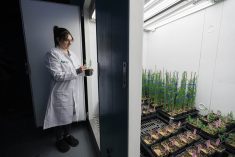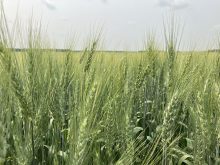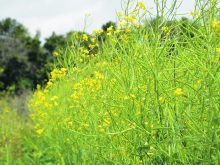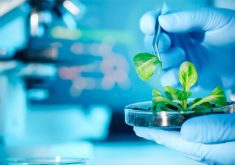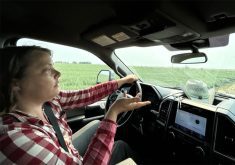Much like a five-year-old with red hair, it turns out plants also need sun protection.
Researchers at the University of Purdue now understand how plants produce their own sunscreen.
Tim Zwier, a chemistry professor at Purdue, determined that crops and other plants use a group of molecules called sinapate esters to block harmful ultraviolet radiation.
It was already known that plants produced these molecules and transported them to the surface of leaves, but scientists didn’t understand what wavelengths of light were screened out and how the plants did it.
Read Also

Canadian Food Inspection Agency extends chronic wasting disease control program consultation deadline
Date extended for consultation period of changes to CWD program
Zwier and his team learned that a plant-produced molecule called sinapoyl malate absorbs a significant amount of ultraviolet light.
“This molecule is a fantastic sunscreen and can absorb a remarkably broad spectrum of UV-B light — the entire spectrum,” Zwier said. “This is about the biggest absorption efficiency you can find in a molecule.”
Clint Chapple, head of Purdue’s biochemistry department, said plants need sunscreen even more than humans because plants can’t move to the shade.
“You, personally, would get one heck of a sunburn if we buried you waste deep in soil and you couldn’t get out of the sun during July and August,” he said.
“They (plants) depend upon light for their energy and when they intercept wavelengths of light useful to them, for photosynthesis, they’re simultaneously getting bombarded with ultraviolet light.”
Without a natural sunscreen, Chapple said the UV light would “cause a lot of damage to the photosynthetic apparatus and the plant would die.”
Chapple, who was born and raised in London, Ont., and graduated from the University of Guelph, said naturally occurring sunscreens were crucial to the development of life on land.
Plants didn’t require sunscreen in the ocean because the water blocked most of the UV radiation. However, plants on land needed something to screen out the harmful rays.
“We think this pathway for developing these sunscreens is probably one of the earliest adaptations to life on land,” Chapple said, adding it likely occurred 400 million years ago.
“Moss is… one of the earliest plants to (grow) on land, they can make these UV sunscreens.”
Chapple said molecules are similar to chemical compounds that produce flavor. Oil of cloves, cinnamon and vanilla derive their flavour from this class of compounds.
Chapple said understanding how plants block out UV rays is a neat trick, but the discovery does more than satisfy scientific curiosity.
Crops depend on these molecules to prevent sun damage, and plant breeders need to understand how natural sunscreens function.
“We are interested in breeding plants that are highly productive and would be resilient to changes in climate that we expect are coming,” he said, adding breeding decisions could inadvertently compromise the production of natural plant sunscreens.
“We can’t afford to have negative (consequences) with regards to UV resistance.”
Chapple said sinapate esters compounds also play a role in the formation of lignin in plants. If researchers can understand the bio-chemical pathway that produces lignins, they might be able to improve biofuel production and livestock digestion.
“As structural components of walls of plants, these molecules (that form lignins) make it more difficult for us to convert that biomass into biofuel…. It also impacts how well cattle, for example, can convert feedstock into biomass,” he said.
“There’s a longstanding interest in this pathway in plants and how we can manipulate it for our benefit.”
Zwier’s paper on sinapoyl malate and plant sunscreen was recently published in the Journal of the American Chemical Society.
robert.arnason@producer.com




